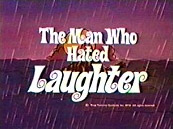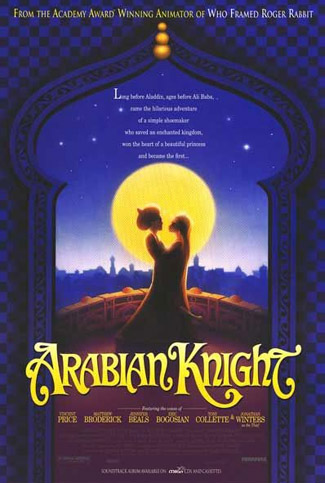
Joe Barbera, Animation Critic. Animation legend Joe Barbera saw nothing funny about a lot of the animated cartoons on television in the mid-1990s. “Today’s stuff looks like a wave of people imitating ‘Ren and Stimpy’. And I don’t have the faintest idea why we’ve gotten into that phase. It’s plain and simply just gross. I actually saw an episode of some show where the whole story took place around a toilet. Will anyone want to see that thirty years from now?
“I see no stories, only different looking characters. But while a lot of Hanna-Barbera characters have heart and feeling, these new ones I see are more phrentic. They zip all over the place and scream a lot. And the shots are just a bunh of quick cuts. You damn near lose your mind watching the show.
“But it’s like classic movies, you can watch ‘Casablanca’ over and over. The stories in ‘The Flintstones’ are still relevant today. Cartoons are meant to be funny and they’re not funny anymore. I wonder what happened to family entertainment. It’s all been replaced by new versions of ‘Ren and Stimpy’. They’re gross and violent, but not funny. There’s no subtle humor, no delineation of character. The voices don’t even stick in your mind like they used to. When I criticize other works, I don’t want to come off as complaining. I always back up and say everyone deserves a crack.”
 The Man Who Hated Laughter. Jack Zander who directed The Man Who Hated Laughter (1972) recalled that he received a call from King Features asking if he would be interested in doing a cartoon with all their comic strip stars. Zander said he got a script from the syndicate but hired a few writers to punch it up. He recalled that the syndicate’s main concern was that the cast of characters looked like their comic strip counterparts. The special was edited down to a half hour format for possible syndication purposes and released once in 1974.
The Man Who Hated Laughter. Jack Zander who directed The Man Who Hated Laughter (1972) recalled that he received a call from King Features asking if he would be interested in doing a cartoon with all their comic strip stars. Zander said he got a script from the syndicate but hired a few writers to punch it up. He recalled that the syndicate’s main concern was that the cast of characters looked like their comic strip counterparts. The special was edited down to a half hour format for possible syndication purposes and released once in 1974.
Cool Bakshi. Voice artist Maurice Le Marche did several voices for Ralph Bakshi’s “Cool World” (1992) film. “I heard all these horror storries about Ralph Bakshi, but apart from his trait of standing right next to you at the microphone smoking cigarettes in your face, that’s the only negative I had about him. I thought he was tremendous. He encouraged a lot of improvisation in the characters. Ralph would show me a drawing and I just went nuts. I found my inner Billy West.” Le Marche did audition for both “Pocahontas” and “Hunchback of Notre Dame” for Disney and didn’t get the work.
Freleng on Superheroes. In 1966, when animation legend Friz Freleng was producing the animated series The Super 6, a Saturday morning series that parodied superheroes, Freleng told the press, “You could animate a Superman series on toilet paper and the networks would buy it.”
 Songs of The Theif and the Cobbler. When Fred Calvert took over the job of trying to put together a releaseable version of Richard Williams’ legendary “Thief and the Cobbler” animated feature, he tried to use as much of the Williams’ produced animation as possible but much of it was repetitive as Williams explored different ways of handling a scene.
Songs of The Theif and the Cobbler. When Fred Calvert took over the job of trying to put together a releaseable version of Richard Williams’ legendary “Thief and the Cobbler” animated feature, he tried to use as much of the Williams’ produced animation as possible but much of it was repetitive as Williams explored different ways of handling a scene.
Calvert added three song sequences. The first was produced by the Don Bluth Studio and the second by Kroyer Studio. Calvert produced the third, sung by desert brigands, trying to use the same animators who had been working on the film. Calvert even included out-takes of Williams’ animation as the images under the end credits to showcase more of Williams’ footage for a film that was re-named “The Princess and the Cobbler” (and later, “Arabian Knight” to try to tie-in with Disney’s “Aladdin” film). Williams’ deal with Warner Bros. was to deliver his version of the film so Warners could beat the release of Disney’s “Aladdin”. When Williams missed that deadline, the film was taken away from him. Williams worked on the film for over thirty years.
Mickey Mouse Banned. The 1935 Romanian authorities banned Mickey Mouse films from movie theaters because they feared that children would be “scared to see a ten-foot mouse in the movie theatre”.
The Amiguously Gay Duo. Robert Smigel sent J.J. Sedelmaier a script for an animated segment for “The Dana Carvey Show” on televison. Smigel was head writer for the show. It was the first “Ambiguously Gay Duo” sequence entitled “It Takes Two to Tango”. (March 19,1996) that debuted on the second episode and was later shown on “Saturday Night Live”.
“When Robert called about ‘The Ambiguously Gay Duo’, he sent me the script and I had never laughed out loud at a script before. I felt if I was going to write a script like this, this is what I would have written. Once he said he wanted to do it like the old ‘Superman’ or ‘Super Friends’ stuff, I thought ‘oh, boy, this is perfect’. We even went to the extent of doing the opening titles as an optical. I didn’t want to do a video title. I wanted to shoot everything on film because I wanted it to have all the quirks of film.
“I would have liked to have made it more grainy, washed out the color a little bit and just make it look like one of those cartoons that are just so bad, when you actually study them you can feel the brain matter seeping out of your ears. That’s the horrible, limited animation that was being done in the Sixties and Seventies but I remember being excited that at least I could see Superman on TV. I got a bunch of copies of the old cartoons and we watched them here and I sent a copy to Robert at ‘The Dana Carvey Show’ and he passed it to the music and the effects people so that they could try to emulate the soundtrack stuff.”
Two of the relatively then-unknown cast members of the show provided the voices: Stephen Colbert for Ace and Steve Carell for Gary. That first episode dealt with the Commissioner of Metroville sending the two heroes to battle the villain Bighead who argues with his two generic henchman about Ace and Gary’s sexuality and the appropriateness of arguing about it.


 Jim Korkis is an internationally respected animation historian who in recent years has devoted his attention to the many worlds of Disney. He was a columnist for a variety of animation magazines. With his former writing partner, John Cawley, he authored several animation related books including The Encyclopedia of Cartoon Superstars, How to Create Animation, Cartoon Confidential and Get Animated’s Animation Art Buyer’s Guide. He taught animation classes at the Disney Institute in Florida as well as instructing classes on acting and animation history for Disney Feature Animation: Florida.
Jim Korkis is an internationally respected animation historian who in recent years has devoted his attention to the many worlds of Disney. He was a columnist for a variety of animation magazines. With his former writing partner, John Cawley, he authored several animation related books including The Encyclopedia of Cartoon Superstars, How to Create Animation, Cartoon Confidential and Get Animated’s Animation Art Buyer’s Guide. He taught animation classes at the Disney Institute in Florida as well as instructing classes on acting and animation history for Disney Feature Animation: Florida.




















































Someone needs to release all the Ambiguously Gay Duo cartoons onto DVD…I’d buy it!
All the “Saturday TV Funhouse” shorts deserve a proper release itself.
Tim: Some of the AGD shorts were included on the SNL Best of TV Funhouse DVD. Granted it’s not ALL of them, but it’s something.
Tim: Some of the AGD shorts were included on the SNL Best of TV Funhouse DVD. Granted it’s not ALL of them, but it’s something.
I don’t suppose they let the Smurfette Show episode play in full on the disc, the TV airing kinda annoyed me they cut it out before the climax happens.
I suspect the “toilet episode” JB is referring to is “The Potty Years” from Tiny Toon Adventures.
I was thinking that too, though I also thought of the 2 Stupid Dogs episode where they obsess over a toilet seat (and that came from H-B).
Beyond being merely inspired by it, Smigel traced actual animation from the ’67 Spider-Man cartoon “Sub Zero for Spidey” in one of his Ambiguously Gay Duo episodes. If memory serves, he replaced Peter Parker walking on the sidewalk and slipping on ice with the Duo, but used nearly the exact design and sequences of the ice-wielding Plutonians.
As a fan of that SNL segment, it’s nice to hear something about its development.
From reading the Joe Barbara quote one has to wonder exactly what it was that he was watching and critiquing. Something tells me that he watched a bit of Beavus and Butthead but i do wish that he named the shows he was critiquing beyond a vague Ren and Stimpy reference
Yes, this does sound a bit like the Beavis episode “Prank Call” too.
“The Man Who Hated Laughter” was the premier offering of the SATURDAY SUPERSTAR MOVIE. Sitting at the far end of Saturday Morning enjoyment – It, like all of the other SuperStar entries…featured VERY limited animation (but, I suppose it gave a lot of beginning animators their first break). I also remember a lot of straight-up, Pan Shots.
In 1974, King Features was trying like hell to revive their Classic characters. All of them. This first feature (with *all* characters interacting), was a fun concept – but difficult to keep interesting for a full hour.
I enjoyed later cartoons from a related series; where each featured a single set of characters.
I knew who the “Katzenjammer Kids” were…as I was a total nerd. My cohorts had no clue as to where these pre-Depression-era characters came from, and found “Saturday SuperStar” and other King Features, early 70s animated entries weird and strange.